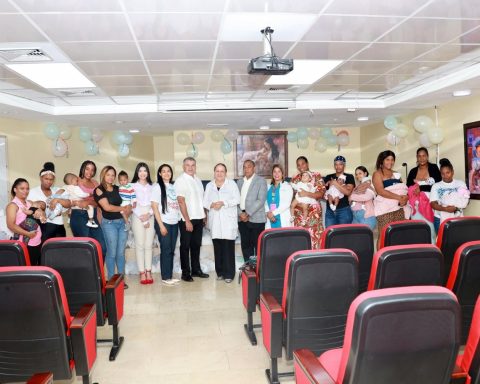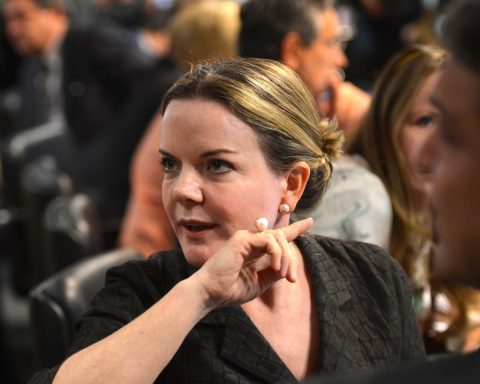The Russian invasion of Ukraine, together with the rise in interest rates, will probably reduce the growth of Latin America and the Caribbean in 2022-2024, which highlights the urgency of adopting policies to promote higher and more inclusive growth in the region, indicates the Macroeconomic Report of Latin America and the Caribbean 2022 of the Inter-American Development Bank (IDB).
“From Recovery to Renewal: Transforming Crisis into Opportunity” analyzes the impacts of the war and offers a policy framework to improve the region’s labor and fiscal architecture that complements other efforts to strengthen its economic and social institutions.
The growth scenarios for each of the countries depend on a variety of factors, from their trade links with Russia to their level of indebtedness. In general, the combined effect of the shocks to global growth, commodities and the financial sector is a reduction in the growth of Latin America and the Caribbean with respect to the pre-war scenario, and an expectation of recovery in the region towards the end of 2023 and in 2024.
The combined shock of higher commodity prices, lower growth rates in the Eurozone and the United States, and a tighter than expected US monetary policy would be a 1.5% reduction in the average annual growth of the Gross Domestic Product (GDP) between 2022 and 2024 compared to the annual growth baseline of 2.2%. This negative scenario foresees that the most developed economies will take more aggressive measures to reduce inflation. This would cut regional GDP growth from 2.1% to 1.2% in 2022 and to -0.4% in 2023. The region would then recover in 2024 with growth of 1.3%, before converging back to long-term growth of around of 2.5%.
“The region demonstrated its resilience by emerging from the pandemic in 2021 stronger than initially projected,” said the president of the IDB Mauricio Claver-Carone. “I am confident that we will be able to do it again, putting COVID behind us and overcoming new geopolitical challenges by seizing business opportunities and adopting crucial reforms. The political economy of these efforts is challenging, but countries will eventually IDB of the 21st century a solid partner to provide them with the necessary resources and knowledge to unleash the region’s potential for growth and resilience”.
Russia is an important market for several of the products it exports Latin America and the Caribbean, including dairy, meat and fruit. Around 20% of the region’s total fertilizer imports come from Russia, as do more than 5% of total iron and steel imports.
The high price of oil and grains will benefit exporters, while importers, particularly those from Central America and the Caribbean, will have to face higher prices. While higher commodity prices are generally associated with lower levels of poverty and inequality in the region, slower growth and higher inflation are likely to reduce the real income of the poorest households, the report warns.
Bottlenecks in supply and ups and downs in demand may be temporary, but the links of global trade are permanent. The region may be able to increase its share of global trade as firms seek to strengthen the resilience of their supply chains. Latin America and the Caribbean is well positioned to limit the volatility of vital raw materials and help the world contain global inflationary pressures.
The report recommends strengthening export networks through better infrastructure and logistics and reinforcing institutions that can promote trade and provide useful information for exporters. In addition to this, those responsible for policy must ensure that many of the trade agreements currently in force are consistent with each other, and finish weaving the network of trade agreements both between countries in the region and with the rest of the world so that they do not links are loose.
On the fiscal front, the report considers that the war will raise the debt ratio from 72% of the debt-to-GDP ratio in 2021 to 74% in 2024.
In 2024, the debt ratio could be 68% for countries that export raw materials and 87% for economies dependent on tourism. The impact of potential financial shocks due to higher interest rates could increase debt levels to 79% of GDP for an average country in 2024, while for tourism-dependent countries the figure could reach 89% and for exporters of raw materials to 74%.
“Many countries will experience a windfall from their commodity exports that they shouldn’t miss out on,” said Eric Parrado, chief economist at the IDB. “The Macroeconomic Report details a new fiscal architecture that protects productive public investments and includes smart fiscal rules for deficit and debt targets in an environment of greater transparency and stronger fiscal institutions to lend credibility to the reforms.”
The report urges governments to reduce technical inefficiencies in spending, for example by equalizing public and private wages for similar occupations, reducing leakage in public transfers through better targeting of funds, and optimizing public purchases. , which could generate average annual savings of up to 4.4% of GDP. Other components of the new fiscal architecture include measures to reduce tax evasion by digitizing records and transactions, replacing costly tax exemptions with a generalized VAT refund for lower-income sectors, and measures to address new challenges of the digital economy and climate change.
The report analyzes the impacts of the crisis on the labor market and the necessary policies for the future. The COVID-19 crisis produced a contraction of both formal and informal employment and also the closure of micro and small businesses. Both employment and wages suffered a greater drop among informal workers, particularly affecting women.
The crisis caused by COVID-19 offers an opportunity to address the pre-pandemic challenges of high levels of informality, low wages reflecting low productivity, and volatility characterized by high turnover and limited incentives for worker training.
Labor informality affects an average of 58% of the labor force in Latin America and the Caribbean at all income levels, but reaches 80% in the lowest income quintile, compared to 40% for workers in the highest paid quintile. Although this problem has existed for decades, the pandemic will probably exacerbate it since informal employment recovers more quickly than formal employment.
The report weighs the costs and benefits of the main policy options. For example, a single subsidy of 1% of GDP for digitization would produce an increase of 0.6% of GDP in the long term compared to a base scenario without changes. Said policy would also generate long-term increases in labor income (0.2%), average business productivity (0.1%) and proportion of formal employment (0.7 percentage points). An investment of 1,000 million dollars in water and sanitation, energy and transportation generates 100,000 jobs.
To deal with the problem of high informality and low coverage of pension systems, a series of reforms to the social security system could universalize certain benefits, make them independent of the situation of each worker in the labor market and finance said benefits with a tax instead of doing it with labor taxes.
In order to help reduce informality, the report recommends that tax authorities reinforce the use of digital technologies, transfers to lower-income workers who work in the informal economy and offer incentives to formality through similar negative labor taxes. to the United States EITC (Earned Income Tax Credit).
The report concludes that the pandemic has posed serious challenges to the region, in addition to the Russian-Ukrainian conflict, given its implications for global politics. However, the region’s resilience in the face of adversity is cause for optimism, as the crisis offers an opportunity to develop new policy architectures in critical areas to improve both equity and efficiency.















